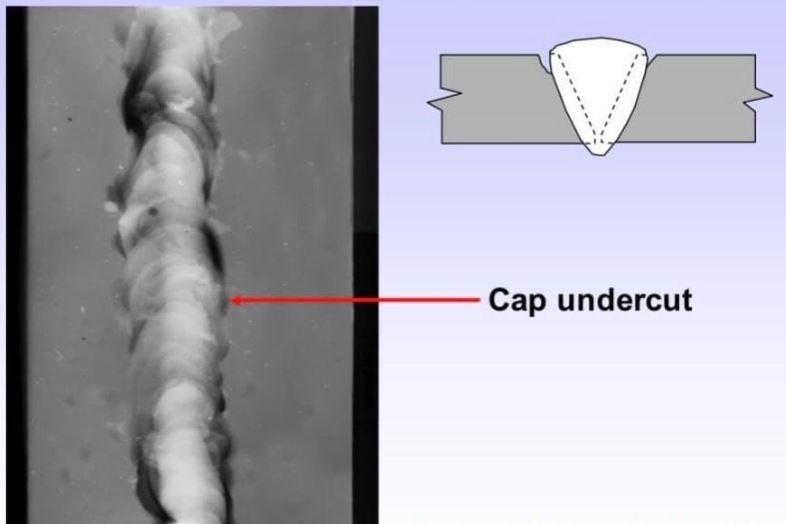Step-by-Step Guide to Preventing Weld Undercut in Different Metals
Understanding the Art of Welding: Just How to Avoid Undercut Welding Issues for Flawless Fabrication Results
By recognizing the origin triggers of undercut welding and executing effective strategies to stop it, welders can raise their craft to new degrees of quality. In the quest of flawless manufacture results, mastering the art of welding to stay clear of undercut problems is not just an ability however a necessity for those striving for excellence in their work.
Recognizing Undercut Welding
To protect against undercut welding, welders must guarantee correct welding specifications, such as readjusting the present, voltage, traveling speed, and keeping the appropriate electrode angle. In addition, utilizing the ideal welding method for the details joint setup is necessary. Using weaving movements or backstepping strategies can help make certain proper weld metal deposition and lower the possibility of undercut development. Regular assessment of welds throughout and after the welding process is likewise critical to catch any undercut very early and make necessary modifications to avoid further flaws. Preventing weld undercut. By recognizing the reasons for undercut welding and executing preventative measures, welders can achieve premium, structurally audio welds.
Root Causes Of Undercut in Welding
Recognizing the variables that add to damage in welding is crucial for welders to generate high-quality, structurally audio welds. Damaging takes place when the weld steel does not effectively fill the groove formed in between the base steel and the formerly deposited weld metal. Numerous aspects can cause undercut in welding. One common reason is too much warm input. Welding at high temperatures for extended durations can lead to the base metal thawing greater than desired, bring about damage. Inadequate welding incorrect or existing welding rate can also add to undercut. Insufficient current might not offer adequate warmth to melt the base and filler metals properly, while too much speed can protect against correct combination, causing undercut. Additionally, improper electrode angles or wrong torch manipulation methods can create locations of low weld steel deposition, promoting undercut. Comprehending these causes and carrying out proper welding methods can help stop damaging problems, ensuring strong and sturdy welds.
Techniques to avoid Undercutting

To mitigate the threat of damaging in welding, welders can utilize tactical welding techniques intended at improving the high quality anchor and integrity of the weld joints. Additionally, making use of the right welding method for the particular joint configuration, such as weave or stringer grains, can contribute to reducing damaging.
Employing back-step welding methods and regulating the weld grain profile can likewise assist disperse warmth evenly and reduce go to this website the danger of undercut. Regular assessment of the weld joint throughout and after welding, as well as applying high quality guarantee measures, can assist in finding and addressing damaging concerns without delay.
Importance of Proper Welding Parameters
Choosing and preserving suitable welding specifications is vital for accomplishing effective welds with very little flaws. Welding specifications refer to variables such as voltage, present, travel speed, electrode angle, and shielding gas circulation price that straight affect the welding process. These parameters must be carefully adjusted based upon the sort of material being welded, its density, and the welding strategy utilized.
Appropriate welding parameters ensure the right quantity of warm is related to melt the base metals and filler product consistently. If the specifications are set too expensive, it can lead to too much warm input, triggering distortion, burn-through, or spatter. On the various other hand, if the specifications are too reduced, incomplete blend, lack of infiltration, or damaging may occur.
Quality Control in Welding Operations

Conclusion
In conclusion, mastering the art of welding requires an extensive understanding of undercut welding, its reasons, and methods to avoid it. By guaranteeing proper welding parameters and implementing quality control methods, perfect fabrication results can be accomplished. It is vital for welders to regularly pursue quality in their welding procedures to prevent undercut issues and generate top notch welds.
Undercut welding, a typical problem in welding processes, takes place when the weld metal doesn't effectively fill up the groove and leaves a groove or depression along the bonded joint.To avoid undercut welding, welders should make certain appropriate welding parameters, such as readjusting the existing, voltage, travel rate, and maintaining the proper electrode angle. Insufficient welding current or inaccurate welding speed can likewise contribute to undercut.To mitigate the danger of damaging in welding, welders can utilize critical welding methods intended at enhancing the quality and honesty of the weld joints.In conclusion, grasping the art of welding requires a complete understanding of undercut welding, its causes, and methods to stop it.